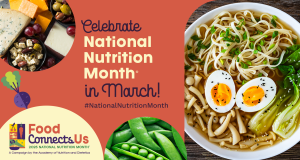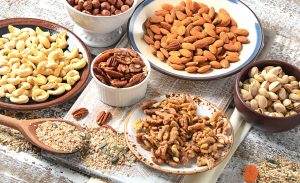
by Samantha Kennedy | Jun 30, 2025
As hurricane season approaches, families in coastal and low-lying areas are bracing themselves for the possibility of devastating storms. While many people may think they are prepared, the reality is that many families are not equipped with a plan to deal with the chaos and destruction that comes with a hurricane. In this article, we will explore the importance of developing a family emergency plan and provide tips on how to create a comprehensive plan that will keep your loved ones safe.
A Plan is Not a Guess
Developing a family emergency plan should not be a guessing game. It is a proactive step that can mean the difference between life and death. A plan outlines what to do in case of an emergency, including evacuation routes, safe meeting points, and communication protocols. Without a plan, families are left to fend for themselves, which can lead to confusion, panic, and tragedy.

Now is the time to prepare your family’s emergency supply kit. Be sure to include items such as nutritious snacks, canned goods, important documents, first aid kit, and other essential items. (Adobe Stock photo)
Key Components of a Family Emergency Plan
A comprehensive family emergency plan should include the following key components:
Safe Meeting Point: Designate a safe meeting point outside the home in case you get separated. This could be a neighbor’s house, a landmark, or a specific location in your neighborhood.
Communication Plan: Establish a communication plan that includes how you will stay in touch with each other, including phone numbers, email addresses, and social media accounts.
Evacuation Routes: Identify evacuation routes and emergency shelters in your area. Make sure everyone knows the routes and shelters.
Emergency Contact Information: Make sure everyone knows important phone numbers, such as your insurance company, emergency services, and utility companies.
Important Documents: Keep important documents, such as insurance policies, identification, and medical records, in a safe and easily accessible location.
Tips for Creating a Family Emergency Plan
Involve Everyone: Make sure everyone in the household is involved in the planning process. This will ensure that everyone knows what to do in case of an emergency.
Practice Drills: Practice your emergency plan with regular drills to ensure everyone knows what to do.
Stay Informed: Stay informed about weather updates and emergency alerts from local authorities.
Review and Update: Review and update your emergency plan regularly to ensure it is current and effective.
Don’t Wait Until It’s Too Late
Do not wait until the last minute to develop a family emergency plan. The consequences of not having a plan can be dire. By creating a comprehensive plan, you will be better equipped to handle the challenges of hurricane season. Remember, a plan is not a guarantee of safety, but it can significantly reduce the risk of injury or death.
Safety Tips
- Stay away from windows and doors during a hurricane.
- Avoid traveling during a hurricane.
- Keep a first aid kit and emergency supplies with you at all times.
- Stay informed about the latest weather updates and forecasts.
- Follow evacuation orders from local authorities.
Developing a family emergency plan is a crucial step in ensuring the safety and well-being of your loved ones during hurricane season. By creating a comprehensive plan, you will be better equipped to handle the challenges of storms and reduce the risk of injury or death. Do not wait until it is too late – take action now and create a plan that will keep your family safe.
An Equal Opportunity Institution.

by Samantha Kennedy | Mar 28, 2025
In today’s credit-centric economy, maintaining a healthy credit score is more crucial than ever. One of the most effective ways to ensure good credit health is by regularly reviewing your annual credit reports from all three major credit reporting agencies: Equifax, Experian, and TransUnion. This practice not only helps you stay informed about your financial status but also protects you from potential fraud and errors that could negatively impact your credit score.
Understanding Your Credit Report
A credit report is a detailed record of your credit history, including information about credit accounts, payment history, and any public records such as bankruptcies or liens. Each of the three major credit reporting agencies collects and maintains this information independently, which means that your credit report from Equifax may differ slightly from the one provided by Experian or TransUnion. By reviewing all three reports, you get a comprehensive view of your credit history and can identify any discrepancies or inaccuracies.
Detecting Errors and Fraud
Errors on credit reports are more common than is often thought. According to a study by the Federal Trade Commission, one in five consumers has an error on at least one of their credit reports. These errors can range from incorrect personal information to inaccurate account details or even accounts that do not belong to you. By reviewing your credit reports annually, you can spot these errors early and take steps to correct them before they cause significant damage to your credit score.
In addition to errors, reviewing your credit reports can help you detect signs of identity theft. If you notice unfamiliar accounts or inquiries on your report, it could be a sign that someone has stolen your personal information and is using it to open credit accounts in your name. Early detection is key to minimizing the damage caused by identity theft, and regularly checking your credit reports is one of the best ways to catch fraudulent activity quickly.
Improving Your Credit Score
Your credit score is a numerical representation of your creditworthiness, and it plays a significant role in your ability to obtain loans, credit cards, and even housing. By reviewing your credit reports, you can identify areas where you can improve your credit score. For example, you might notice that you have high credit card balances or a history of late payments. By addressing these issues, you can work towards improving your credit score over time.

Reviewing a copy of your credit report from each credit reporting agency at least once a year is a great way to discover errors that may negatively impact your credit worthiness. (Adobe Stock photo)
Taking Advantage of Free Reports
Under the Fair Credit Reporting Act (FCRA), you are entitled to one free credit report from each of the three major credit reporting agencies every 12 months. In 2024, this changed to free weekly copies of your credit report from each agency. This means you can access your credit reports from Equifax, Experian, and TransUnion at no cost, giving you the opportunity to review your credit history without any financial burden. To obtain your free reports, you can visit AnnualCreditReport.com, the only authorized website for free credit reports. You will never be asked to pay for your credit report on this site. If you are, you are on the wrong site.
Reviewing your credit report from all three major credit reporting agencies is a vital step in maintaining your financial health. By staying informed about your credit history, detecting errors and fraud early, and taking steps to improve your credit score, you can ensure that you are in the best possible position to achieve your financial goals. Don’t wait until it’s too late—make reviewing your credit reports a regular part of your financial routine.
An Equal Opportunity Institution

by Samantha Kennedy | Feb 27, 2025

National Nutrition Month helps promote healthy eating for individuals and families. (Photo source: Academy of Nutrition and Dietetics, eatright.org)
Maintaining a healthy diet is more crucial than ever. According to the Academy of Nutrition and Dietetics, a nutritious, balanced eating plan is essential for optimal health at every stage of life. Healthy eating not only helps manage weight and prevent chronic diseases but also boosts mental well-being and energy levels.
Healthy eating involves consuming a variety of foods that provide the nutrients needed to maintain health, feel good, and have energy. These nutrients include protein, carbohydrates, fat, water, vitamins, and minerals. A balanced diet includes fruits, vegetables, whole grains, and lean proteins, which are vital for maintaining a healthy body and mind.
The benefits of healthy eating are numerous. It can reduce the risk of chronic diseases such as heart disease, diabetes, and cancer. Additionally, a nutritious diet supports brain function, improves mood, and enhances overall quality of life. For instance, incorporating more fruits and vegetables into your diet can provide essential vitamins and minerals that boost your immune system and keep you feeling energized.
Beyond its nutritional value, food has a unique ability to bring people together. The theme for National Nutrition Month 2025, “Food Connects Us,” highlights how food plays a significant role in our social lives.
Sharing meals is a universal experience that transcends cultural and geographical boundaries. It fosters a sense of community and belonging, whether it is a family dinner, a holiday feast, or a casual get-together with friends.
Food connects us to our heritage and traditions. Many cultures have specific dishes that are passed down through generations, each with its own story and significance. These culinary traditions are often at the heart of celebrations and rituals, reinforcing cultural identity and continuity.
Moreover, preparing and sharing meals can strengthen relationships. Cooking together can be a fun and educational activity that encourages teamwork and communication. It provides an opportunity to learn about different ingredients, cooking techniques, and cultural practices. Eating together allows for meaningful conversations and the sharing of experiences, which can deepen bonds and create lasting memories.
Promoting both healthy eating and the social aspects of food can be achieved through various initiatives. National Nutrition Month encourages people to make informed food choices and develop sound eating and physical activity habits.
Communities can organize events such as cooking classes, nutrition workshops, and communal meals to educate and engage people in healthy eating practices. Schools and workplaces can also play a role by providing nutritious meal options and creating environments that support healthy lifestyles. Encouraging family meals at home can help children develop healthy eating habits and strengthen family connections.
Healthy eating is vital for maintaining physical and mental well-being. At the same time, food has the power to bring people together, fostering a sense of community and connection. By embracing both the nutritional and social aspects of food, we can enhance our health and enrich our lives.
An Equal Opportunity Institution

by Samantha Kennedy | Dec 6, 2024
In the middle of the daily jungle of stressors, there lies a powerful antidote: nature. Research has shown time and again that spending time in green spaces can significantly reduce stress levels and improve overall well-being. And here in Wakulla County, we are blessed with a variety of beautiful places where we can get close to nature.
Here are five ways in which nature works its magic on our minds and bodies:

Spending time with loved ones in nature has been shown to reduce feelings of stress, depression, and anxiety. (Adobe Stock photo)
Step into a forest and be greeted by a symphony of birdsong, rustling leaves, and babbling brooks. These natural sounds have a remarkable ability to soothe frayed nerves and calm anxious minds. Studies have found that exposure to nature sounds can lower levels of cortisol, the stress hormone, and promote relaxation. Additionally, the fragrances emitted by plants and trees, such as pine and lavender, have been shown to have therapeutic effects, reducing stress and anxiety.
The sight of lush greenery and expansive landscapes can have a huge impact on our mental well-being. Whether it is a sprawling meadow, a tranquil lake, or a majestic mountain range, natural scenery provides a visual feast that helps alleviate stress and elevate mood. Even a brief glimpse of nature through a window or a walk in the park during lunch breaks can rejuvenate the mind and enhance cognitive function.
Spending time outdoors exposes us to fresh air and sunlight, both of which are essential for our physical and mental health. Sunlight triggers the production of serotonin, a neurotransmitter that regulates mood and promotes feelings of happiness and relaxation. Additionally, exposure to natural light helps to regulate our circadian rhythms, leading to better sleep quality and overall well-being. Meanwhile, fresh air rich in oxygen boosts brain function and invigorates the body, providing a natural energy boost.
Engaging in physical activities such as hiking, gardening, or even just taking a leisurely stroll in the park allows us to reap the dual benefits of exercise and nature. Exercise is known to be a potent stress reliever, releasing endorphins that act as natural mood lifters. When combined with the calming effects of nature, physical activity becomes even more effective at reducing stress and improving mental health. Furthermore, outdoor exercise encourages mindfulness and promotes a sense of connection with the natural world, fostering feelings of peace and contentment.
Interacting with wildlife, whether it is watching birds soar overhead or spotting deer in the woods, fosters a sense of connection with the natural world. Studies have shown that spending time in nature and observing wildlife can evoke feelings of awe and wonder, which in turn reduces stress and increases feelings of happiness and well-being. Additionally, caring for pets or spending time with animals has been found to have therapeutic effects such as lowering blood pressure and reducing anxiety.
In conclusion, the healing power of nature is undeniable. By immersing ourselves in green spaces and reconnecting with the natural world, we can effectively manage stress, improve mental health, and enhance overall quality of life. So, the next time feelings of stress seem overwhelmed, consider taking a stroll in the park or escaping to the great outdoors.
An Equal Opportunity Institution.

by Samantha Kennedy | Nov 15, 2024
Maintaining a healthy diet can be challenging, especially for individuals managing high blood sugar levels. Choosing the right snacks is crucial for avoiding blood sugar spikes and keeping energy levels stable throughout the day. Here, we explore several healthy snack options that are both delicious and beneficial for those with high blood sugar.

Snacks high in protein, fiber, and healthy fats such as nuts and seeds are a healthy choice for people looking to manage their high blood sugar. (Source: Adobe Stock photo)
Nuts and seeds. These foods are excellent snacks for people with high blood sugar. Almonds, walnuts, flaxseeds, and chia seeds are rich in fiber, healthy fats, and protein, which help stabilize blood sugar levels. A handful of almonds or a tablespoon of chia seeds in a smoothie can keep you feeling full and satisfied without causing a spike in blood sugar. Additionally, these snacks are packed with vitamins and minerals that contribute to overall health.
Fresh vegetables. Foods like carrots, celery, and bell peppers are low in calories and carbohydrates, making them ideal for blood sugar management. These veggies are high in fiber and water content, which help in maintaining a feeling of fullness. Pairing them with hummus or a Greek yogurt dip adds protein and flavor, creating a balanced and tasty snack option.
Berries. Foods such as strawberries, blueberries, and raspberries are not only delicious but also have a low glycemic index, meaning they do not cause significant spikes in blood sugar. Rich in antioxidants, vitamins, and fiber, a small bowl of mixed berries can be a satisfying snack. For added protein, consider combining them with a small portion of Greek yogurt or cottage cheese.
Whole-grain crackers and avocado. This combination provides a perfect balance of complex carbohydrates, healthy fats, and fiber. Whole grains help slow digestion, preventing sudden increases in blood sugar levels, while avocados offer monounsaturated fats that are heart-healthy and satisfying. Sprinkle some chia or sesame seeds on top for an extra nutritional boost.
Greek yogurt. This very versatile snack is high in protein and lower in sugar compared to regular yogurt. It is an excellent option for people with high blood sugar, as protein can help slow the absorption of carbohydrates, thereby preventing spikes. For a more filling snack, add a handful of nuts or fresh berries to a cup of Greek yogurt.
Hard-boiled eggs. This is a simple and convenient snack option packed with high-quality protein and healthy fats. They can help stabilize blood sugar levels and keep hunger at bay. Sprinkle a little salt and pepper or enjoy them with a side of fresh veggies for a complete snack.
Edamame. Also known as steamed soybeans, these are an excellent snack choice for those managing high blood sugar. They are high in protein, fiber, and essential vitamins and minerals. A half-cup serving of edamame provides a satisfying and nutritious snack that supports blood sugar control.
For individuals with high blood sugar, mindful snacking is essential to maintaining stable glucose levels and overall health. By choosing nutrient-dense, low-glycemic snacks such as nuts, fresh vegetables, berries, whole grains, Greek yogurt, hard-boiled eggs, and edamame, it is possible to enjoy delicious and satisfying snacks without compromising blood sugar control. Incorporating these healthy options into your daily routine can make a significant difference in managing high blood sugar effectively.
For more information about healthy eating for people with or without high blood sugar, please contact Samantha Kennedy, County Extension Director, at 850.926.3931.
An Equal Opportunity Institution.









